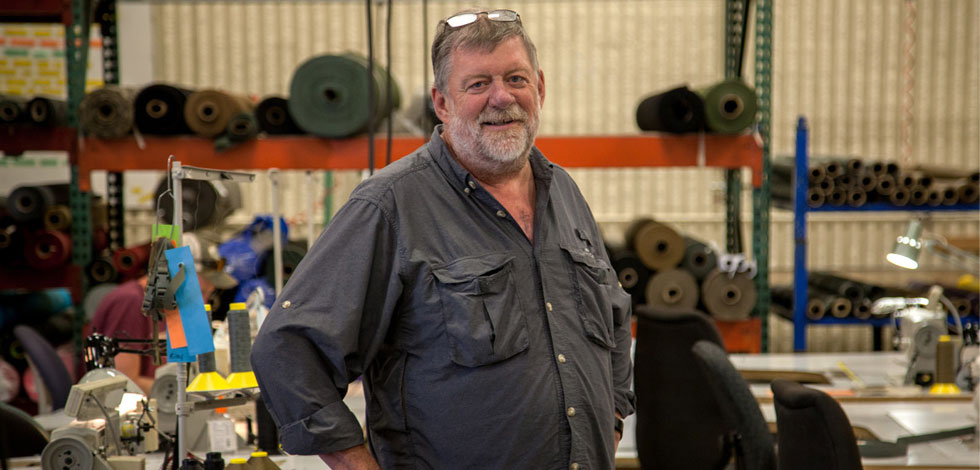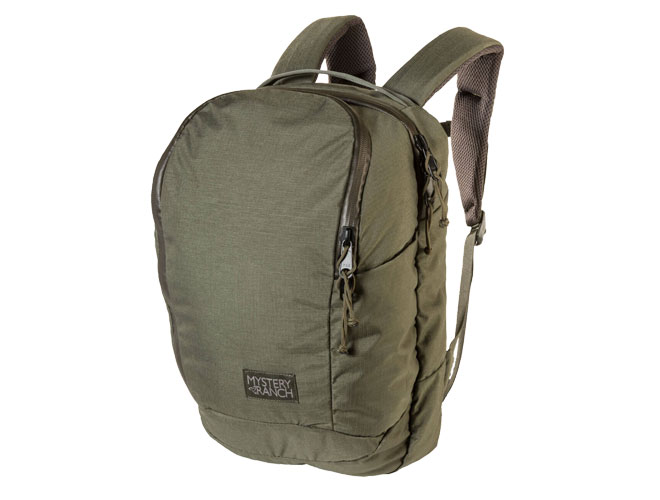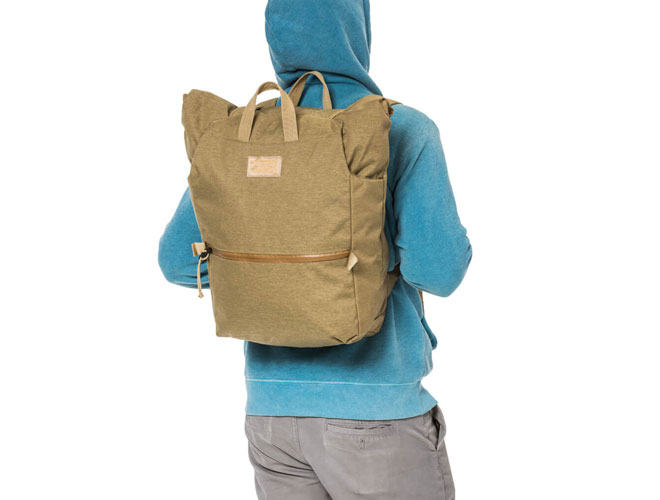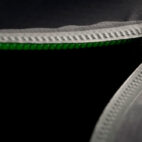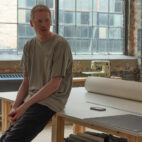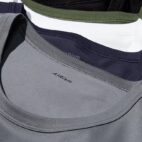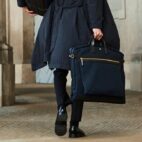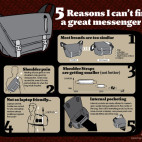A Conversation with Mystery Ranch Founder Dana Gleason
‘Legend’ is a term that can be bandied about sometimes. But in the world of carry, Dana Gleason is a true legend. Having been in the industry for over four decades, he’s the man behind pioneering and game-changing brands such as Dana Design, Kletterwerks and of course Mystery Ranch. We were honored to welcome Dana for our very first Carryology Classified Live Q&A event. Enjoy his wisdom and insights below…
*Feature Image by Field Mag
How does your design process work? What are the key stages? What do you draw inspiration from?
The design process works in fits and starts. We have done a huge amount of work over the last few years to smooth that out, but that mostly means setting an intelligent group of deadlines that allow us to be designing, in most cases, for the ‘commercial world’ and the ‘sports world’ a year and a half out. And in some cases, in the ‘mission world’ (aka military), we have to maintain the ability to respond quickly if needed, which means 90 days, which may not sound quick, but it is.
What do we draw inspiration from? Our customers use their gear hard, the harder the better, which gives some pretty clear needs that have to be addressed at any given time. Basically, the harder the problem, the wider and wilder we can go in terms of how to address the problem. And that’s actually been a very enjoyable thing to deal with, especially the mission side.
Will we ever see a MR pack with a clamshell opening?
I have nothing against clamshell-type openings, whereas we call them panel zips. And in fact, I’ve got three packs at least in the line right now that are panel loaders: the Ridge Ruck Ski Packs (because we’re putting too many things on the back to throw a central zip for a 3-ZIP on); our Mission Rover (which is a large travel pack because it only makes sense to be able to zip one side off and open it up); and we also have the Slick (which is one of our daypack line of everyday carry packs). I cannot tell you that 3-ZIP is the one true way and that’s why we are fairly open to panel loads and certainly top loads and other packs.
What’s your thoughts on local vs international production and what do you think about the benefits?
Here at the Ranch we’ve been for a number of years working out how to build a high-quality pack, and how to control the production so that you can get high quality. In our earlier days we produced everything in Bozeman, but that is something that is no longer practical. I have a plant with about 100 people here in Bozeman and it is absolutely key to what we’re doing. But it’s not key in the actual raw numbers of production; it’s key that we have our own production plant so that we can absolutely have production done our way. And you have to have the ability to produce yourself in order to have a semi-intelligent opinion that way. For us, it’s absolutely key to have a little bit of very fast-response production.
But the most important part is we are able to train more supervisors, more quality-control people – and actually working on our production floor is the absolute put-your-foot-in-the-door first step to becoming a Rancher.
There’s one other operation in North America that does things to this extent. And that’s our friends up in Vancouver at Arc’teryx who are the only other people we know of that have their own on-shore plant in addition to doing an awful lot of production in Asia. Or, in our case, also doing certain amounts of contracted production in the United States. Without having your own core plant, you don’t have an intelligent say in the matter. And that’s why we keep our own production going as an absolute starter in the rules of our game.
Can you tell us about your product testing facilities? What kinds of machines do you have in-house? And what percentage of in-house machine testing vs real-world testing do you do?
Everything gets used in the real world. As a prototype and in pre-production phases we are still working with it. But the other thing that goes on is the actual testing we do of materials. We have a Taber tester, we have a Mullen Burst tester. The Taber gives us abrasion numbers on an ASTM standardized scale. The Mullen will give us basic information on pounds per square inch for entry of water. We have a rather large oven that we toast some of our fire packs in during preliminary testing to make sure that we’ll meet the National Fire Protection Association requirements.
Those are tests that have to be done by Underwriters Lab from our actual production when we are producing it, but we always like to know what is going on. And any time we have to withstand outside tests, we will, as a matter of habit, have that test available inside here so that we can know what’s going to happen, instead of merely hope.
Another thing that is connected to the test protocols is that we’re an ISO 9001 certified company. This means that our quality standards, and actually the standards we hold everything to, are documented and documented in a way that is accessible to everybody who is building the gear. And it’s an actual requirement for a number of countries and for some specialized areas. It is something that we did on the way to what I’d call “growing up a bit.” We had a great quality system and we’ve been known for it for many years, but so much of it was simply folklore. And as that passes along from person to person, things can change. So having the standardization that we were able to derive using ISO 9001 as a framework to hang our folklore on gave us the best of both worlds.
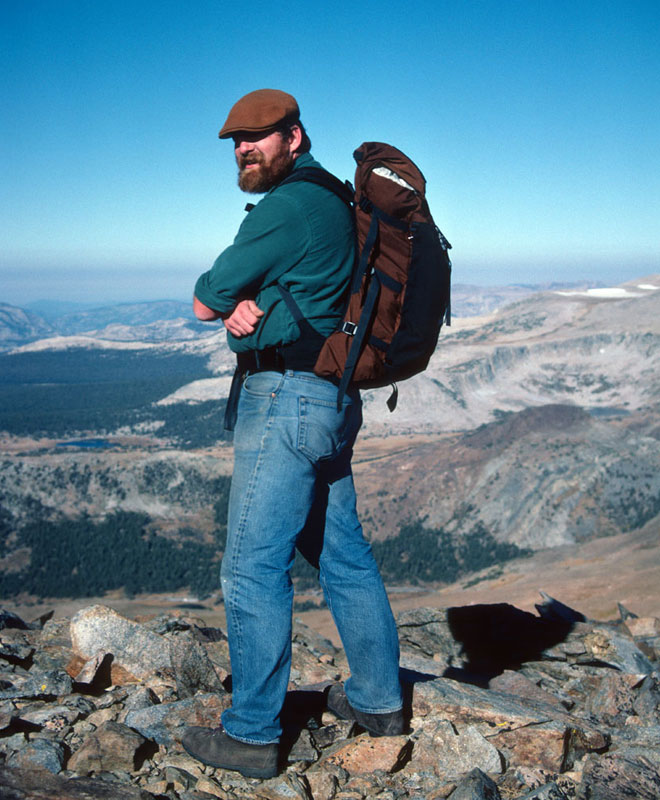
Are there any designers who really inspire you?
Oh, boy. There are a lot who really inspire me. But I have to tell you, the designers who are inspiring me right now are some of our folk on the inside. At one time, and not that long ago, I was the primary designer here at Mystery Ranch. And before that, at Dana Design. But nowadays we have essentially created our entire design crew. And that’s a staff that numbers 16 right now. Folks who came up off the floor, came up manufacturing packs or, in some cases, repairing packs, and all ended up with a point of view because of that.
That point of view is not always precisely mine. When I go back and we go through what we’re preparing for the following year, when I see something that I never would have come up with and it’s cool, there’s nothing that tickles me more.
The creative process from the Ranch now encompasses several visions, all with the same outlook on quality and usability in the field, but with some different bits of, dare I say it, artistic vision. And it is cool to be around.
Are there certain types of users that blow your mind with their feedback? Anyone that understands carry at a higher level than others?
There are some people who, at their extremes, are extremely knowledgeable people. Firefighters, for example. We created the Fire Packs in cooperation with firefighters. And this is really key. I understand, and our designers understand, an awful lot about putting the load on the human body. What that human body is intending to do with the load, we don’t really know in a lot of cases. I was pretty good on the climbing and skiing side of things and certainly backpacking. But when we first started encountering military folk, and especially when we first started encountering firefighters, we could show them how we thought the load should be carried.
But the reality is they had a bunch of other needs. The firefighters have to carry what is, in general, a 20-plus to 35-pound load. They have to wear it at all times. And they are essentially going through the activities involved in being a ditch digger or a logger at that same time. Their experience is outside of certainly my camp, so we have to collaborate as opposed to telling people how they should be doing the job.
In the military it was actually a more extreme case because when we first started doing stuff as Mystery Ranch with the military, they had bought the Kool Aid. They had been, “Oh man, these civilian pack-makers are so far ahead of us, we need to simply take what they’ve got and roll with it.”
And in the case of the Marine Corps, they actually did a licensed version of an Arc’teryx Explorer, which is a great pack. But unfortunately, it is a bit of a pain to adjust and no marine ever successfully adjusted it to our knowledge. Not because it’s hard to adjust, but because they didn’t have the patience to do it and they had other concerns. And so, while that was a great pack, on the Marine Corps’ use, it turned into one of the world’s most expensive sea bags.
“I understand, and our designers understand, an awful lot about putting the load on the human body. What that human body is intending to do with the load, we don’t really know in a lot of cases. So we have to collaborate as opposed to telling people how they should be doing the job.“
We were in a similar position. We had people in SOCOM using what was a latter day Terraplane. They had a little more patience and time to work with it and it worked a bit better for them. But we ended up evolving what we do for military folk so it works the way they will actually use things because otherwise their response is, “Ah, it sucks!” if it doesn’t immediately do everything they would expect. So we had to build gear that would work the way they would like to use it.
How did the 3-ZIP design come about?
Well, the 3-ZIP happened basically because I was damned sick and tired of zipping open my panel-load ski pack and then basically having a fair amount of stuff spill out into the snow. When you’re climbing on skins you’re, relatively speaking, a little less stable than you might be if you were simply walking. And if you want to get into the gear, you had to take your pack off, unzip it the whole way or most of the way, and then start rifling around.
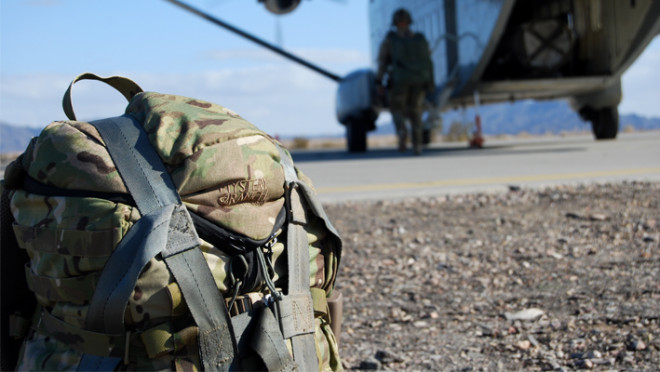
The 3-ZIP came about because some things you know you’re going to be able to get easily if you get into the top of the pack. That’s why the two top zips are in a kind of V-configuration. Which, when shut entirely, allows you to simply get in by grabbing it and ripping it open. You’ll note, even though the center zip to the pack is still open, you don’t have everything falling out. So you can then intelligently grab what you need.
This made a lot of sense for skiing. And although it didn’t allow us to strap our skis diagonally across the front of the pack, which quite a few of our simpler ski packs do, it still gave us an awesome A-frame carry and very quick access. Now, we ended up building a couple of hundred of these and selling them around Bozeman around 2005, I guess, we started up with the first 3-ZIP. Its initial version had the three zippers coming together as a point, with a little hole. After the first half dozen prototypes, I realized we needed to build it with three separate zippers and this little triangular panel that comes up underneath the top of the pack, which gives us an absolute weather-proof seal. Once that was done, we had a great pack that was initially for skiing, but most other people who saw it went, “Oh, that’s funny” and didn’t really take it further.
It was about another year and a half later, when we started doing a version that we showed to a number of people on the military side and they saw the access advantages, that 3-ZIP really took off. On the military side we’ve done more than 100,000 of them to this point and it’s become a pretty accepted design. And it is such a practical design that it has truly spread through the entire Mystery Ranch line in all of the places we actually operate in. And, okay, ego time: I had never seen a zipper system like that until we ended up creating it. And I’m awfully darned proud of it. It is something that’s become a bit of a standard.
With such a long history in the hunting, military, and outdoors market, what caused you to finally start devoting some attention to EDC/Civilian markets? And are you happy with the feedback from your EDC customers?
Some of that comes into just the necessities of the business. When we first started Mystery Ranch, we were trying to produce in the United States and, practically speaking, that kind of eliminated us economically from selling in the backpacking world. When I first started out, even the kind of prices my American-made Dana Design stuff was back in the ‘90s was considered far too expensive. We were being told no one would ever buy a pack for more than $229. Ever. And that we had to go overseas and start producing stuff that the dealers wanted to sell. And we were trying to make the company work entirely through dealers. We pursued this course for a good four years. We had more interest coming in from the military side where I could still produce in the United States and control production. And ultimately, in 2004 we ended up withdrawing from the civilian market in terms of selling through dealers.
Over the course of the next seven or eight years, ultimately the company grew many fold. It grew to become several times bigger than Dana Design ever peaked at. And we were building for the mission-based customers. Just a little bit of odd history: it was in 2010 and we were only selling either to firefighters or the military or a little bit direct on the web to people who still remembered. And we had some Japanese come walking through after their trip to Yellowstone and they saw what we were doing and they bought our tiny factory store out to the walls. And a month later another group came and did the same thing.
It was discovering that we still had a base of people in Japan who loved what we were doing, loved the fact that we were building for people really using gear to its absolute limits, that we ended up finding a group of people who were ultimately demanding that we start building daypacks and other things. And it was our connection with A&F in Japan, which is just an awesome, awesome group of users that both distribute gear in Japan and have their own stores, that we got the message loud and clear that there was a market there.
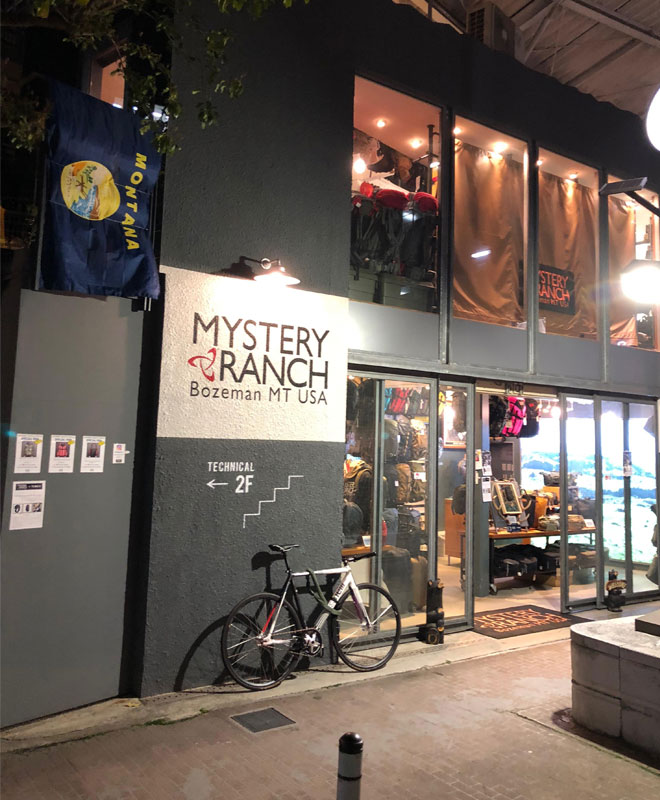
Mystery Ranch, Tokyo
Part of what we had to do, though, to effectively start coming back to the everyday market is create our own production systems that would allow us to duplicate the quality levels we have in our US production in Asia. And that took a lot of work. It was only possible because we do our own production. And it became possible because our friends in Japan guaranteed enough business to where we could be big enough to be significant to a plant in, say, the Philippines. And have them be willing to do the hard work, to do it our way. And it isn’t easy. We ask for a higher attention to detail than you will find with many other companies out there. And we cannot cut prices year after year because we’re asking these people to do a quite difficult job and they need to be able to make a few pesos on it themselves.
So really it’s the last five years that we started coming back on building packs for people who’re in the outdoors or in the cities. And it took a little bit of a while to brush off my absolute-gear orientation and start building stuff that not only works remarkably but looks remarkable and makes a statement. We’re so proud of the stuff that we’ve been able to turn out now. And the feedback from the everyday carry folk is absolutely some of the most demanding stuff we have to deal with these days. And it’s a hoot, I’ve got to say.
In your career, what is your favorite pack design that you’ve made? And what is your favorite pack designed by another brand?
As much as I am proud of the 3-ZIP, and it is certainly something that informs everything we do today, I really think I came up with something awfully nice with the original Terraplane design back in the Kletterwerks days, which had two pockets on the back, an immovable lid, sleeping bag compartment, but was self-framing in the most ultra-light of manners. And it’s carried through in everything I have done out to now, 42 years later. The Terraplane rules, man.
And as for my favorite pack designed by another brand, it isn’t currently being made, but the ski pack from my friends at Wookey. It’s no longer a build-for-sale pack company, but they are hugely involved in the pack business at a higher level. Man! I’ve built a lot of ski packs. The Wookey ski pack is still the finest thing around. Even if it is a panel-loading pack.
What’s the best single place to see the span of what you do at Mystery Ranch?
Well, it’s not in the United States. It is in Harajuku, a shopping district in Tokyo. Our friends at A&F have created a standalone Mystery Ranch store and they have acted as curators and collectors. They try and get bits and pieces of everything we do for the military world, which a lot of that doesn’t show up in any public way, and they have been awesome at simply maintaining history. And once you go up on the second floor there, you’re in a land of weirdness – and I love it.
Who are the designers that you used to look up to when you were young?
Well, I thought Don Jensen was the bee’s knees. He’s the guy who invented what we called body packs at the time. Packs that basically consisted of two or three tubes that you stuffed really tightly and then the pack supported its own shape. But Don was killed in a bicycle accident in the very early ‘70s in England. Beyond that, there’s a lot of people that I acknowledge. There’s a lot of good design out there.
Really, in terms of designers, I kind of keep my head down, do my own thing. I mean, I fully acknowledge Wayne Gregory, let me tell you. We both worked for a company called Snow Lion back in the very early ‘70s. Neither of us doing anything to do with packs, but we’ve been aware of each other since then. And Mike Pfotenhauer did an incredible job in taking over the US backpacking market as Dana Design started falling apart in the most corporate of manners after I left. Mike has had a lot of good visions and the way that he made the jump to doing overseas production truly shows how it should be done. But you’ll note in both of those cases I’m not really bowing down before design. I’m bowing down before other elements that they both accomplished in being able to reach a large number of people with their designs. And they’ve done a great job.
In the carry world what single specific innovation has stood out?
I’ve got to tell you, the injection-molded buckle was a huge one and I started building packs since ’75. There were a couple of freakishly weird plastic buckles at the time, but the folks at ITW, also known as Fastex, really kind of systematized plastic buckles for quite a while until they got a little sloppy and then we had the folks at National Molding come along and really push that game quite a bit.
Cordura Nylon was a breakthrough and that was really just starting to show up a tiny amount as artificial canvas back in 1975. And what it actually was, was the tyre cord that had been developed for the newest generations of tyres back then. It had the little bit of fuzz that you see on classic Corduras because that helped to get molded into the tyres the best. But they started weaving it a little tighter, dying it, putting a coating on it and it turned into the most awesome fabric. We had nothing to lose so we were one of the first people to actually start introducing it and it’s been a great ride with the Cordura people right through to this day.
What’s your go-to everyday carry pack?
I’m still awfully proud of the 3-ZIPs and I am awfully fond of the folk who have adopted it. One of my two everyday carry packs is the 3 Day Assault Pack. There’ll be a model coming out called the 2 Day Assault, which has a little bit less military featuring throughout and is still the same kind of build. But the other pack that I carry and I love is called the Super Booty, which is a somewhat overbuilt version of our somewhat overgrown grocery bag, the Booty Bag, that is built so that I have a weather-proof sack that doesn’t use any zippers except in the two very minor pockets and automatically closes over itself. It is an awesome pack. Unfortunately, I didn’t design it. A gentleman who goes by the name of D3 had the most to do with that. And I’m awfully proud to be able to carry one of my son’s packs.
Can you provide insights on how long it takes to complete a design from start to finish?
First off, we’re working a year and a half ahead for the everyday carry market. We have to, basically. And we’re working on 2020 right now. We’re just about finished and then we’ll be going right on to 2021. Basically, it takes the amount of time it takes for us to design it, which is a minimum of 30 to 60 days on something that would be a no-brainer. And the people on my design staff all look at me and laugh. But the reality is, if you were focusing on one pack and just working it through, you could do it in 30 to 60 days and have a pretty well-done backpack.
But then you have to look at what are the materials you’re going to want to use? What are the lead times? What are the MOQs, the minimum order quantities for the different materials involved? And you have to get them ordered. If you have to develop new colors, which are a real factor in the everyday carry world, you can add on three to four weeks just for dipping the colors you designed on and getting a close enough match. And then you can order the fabric and order the other stuff. And there’re just huge lead times involved in doing this stuff in an economic manner.
Are there any designs you regret coming up with?
There’s a frame design or two back in the Dana days that didn’t really deliver everything I wanted. But a corollary to this question, a couple of the most important designs I ever did are things that we worked out the whole way and that we ended up not producing because it was either an overwhelming overkill for what we were trying to do or it simply didn’t make sense. And realizing that it’s better not to bring something to market that falls directly on its face or, to an even worse degree, fails its user, is absolutely essential.
Now, I’m sure there are more of these than I’m remembering right now, but I’ve been doing this for 43 years. And believe me, you learn the most from your mistakes. If you think up something and it’s good, be thankful. But unless there’s been some drama involved, it probably didn’t end up actually teaching you a lot. We’re, to some degree, a little bit lazy here. I’d rather not make the same mistake two or three times and, frankly speaking, once you get spanked a few times, you end up becoming better at taking those lessons.
What is the one thing that brands always get wrong, be it design or business?
Really it is thinking that what you are doing is a primary concern of the user. The user has his own or her own life and they’re looking to get on with it. They are looking for something that will be easy to use, work the way that they expect to use it and if they end up actually caring about what you did, it’s because you did something that, besides working well for them, resonates with their self-image. And doesn’t change it, doesn’t make it cooler, it simply resonates with them.
To truly succeed we need to not just have a physical connection that works on the body, but there is a kind of indefinable emotional connection to a piece of really good gear as well. And that’s not something that you can produce every time, it is something that we only noticed happening starting in the ‘80s. But every so often we get it really right and we end up creating something that a substantial number of people love. And when that happens, it’s magic and it’s something I’m so proud of. But is it something I control? No. When it happens it’s a wonderful thing. And it happens a reasonable amount with most Mystery Ranch or Dana stuff. Something that I’m hugely proud of.
Oh, and one other thing that our Ranch and designers always get wrong: modularity. As a designer, producing something that can solve a lot of different problems seems like a wonderful thing. I have built entire pack lines around that notion and I have had them crash and burn in terms of whether or not people actually sign onto modularity. People want to solve a problem, usually the problem that is right ahead of them. And telling them you’ve given them a tool that can solve a lot of other problems matters not at all.
And I have to tell you, a lot of Mystery Ranch stuff is seriously modular, where we could substitute bags and frames, etc. There’s a couple of cases in the hunting world where we offer that and it sells a very limited amount. People want to solve the problem they’re concerned with at the time. And buying into a system is entirely different.
“You learn the most from your mistakes. If you think up something and it’s good, be thankful. But unless there’s been some drama involved, it probably didn’t end up actually teaching you a lot.”
What’s your thoughts on building for durability versus light weight?
We build packs to be used. We build them knowing that people may break things. Corridors are the mortal enemy of plastic buckles and we have to build stuff that is going to work in everyday use. Something that has been, relatively speaking, difficult to deal with has been the worship of “lightweight”. Around about 2000, the notion got established that light was the only thing to judge things by. And, you know what, if you can keep your load under 20 pounds, you don’t need much of a pack. Just carrying it off the shoulder pads is fine.
Once your load starts edging up towards 30 pounds, we can do a huge amount to channel that load to parts of your body that will take it better than just your shoulders. And as the loads get heavier than that, we can make a bigger difference still. And the thing about lightweight is you’re always cutting away. You want to make the buckles as ethereal as possible. You want to make the webbing either ¾” or ⅝” or maybe even ¼”. Which is great for weight, but sucks to use and sucks for strength.
We have always built gear to be used and used in the field and be used by the folk who will abuse it the hardest. We have done a lot of balancing through the years. And we’ve come up with, you know, we can be semi-light. We’ll almost never be ultra-light. The semi-light stuff will let us take a 30-pound load in a 3-pound pack and make a huge difference in how it carries. The thing is, if your pack was 4 pounds instead of 3 pounds and you’ve got a 31-pound load, you’re not going to notice that difference. Not at all.
So we build a tool and the tool does some very difficult things and is built to do them in basically all circumstances. I’m probably never going to try to build the ultra-light pack for the pure gear list for doing nothing but walking on the AT or Pacific Crest Trail. But there’s a lot of people doing stuff in that way. We try to do things that might be a little more difficult for the gear.
And D3 is in fact a genius, as is his brother Paul. They both do design work. Dana on the inside here. Paul has gone independent after a 13-year career at the Ranch. And I am a proud, proud Papa, let me tell you.
Oh, I want to throw out further, D3 and I are the only multi-generational winners of Backpacker’s Editors’ Choice Award. Which was something that we realized when we were sitting together on a chair lift in Bridger Bowl and I was the one who got my fist out the fastest to whack him hard on the shoulder.
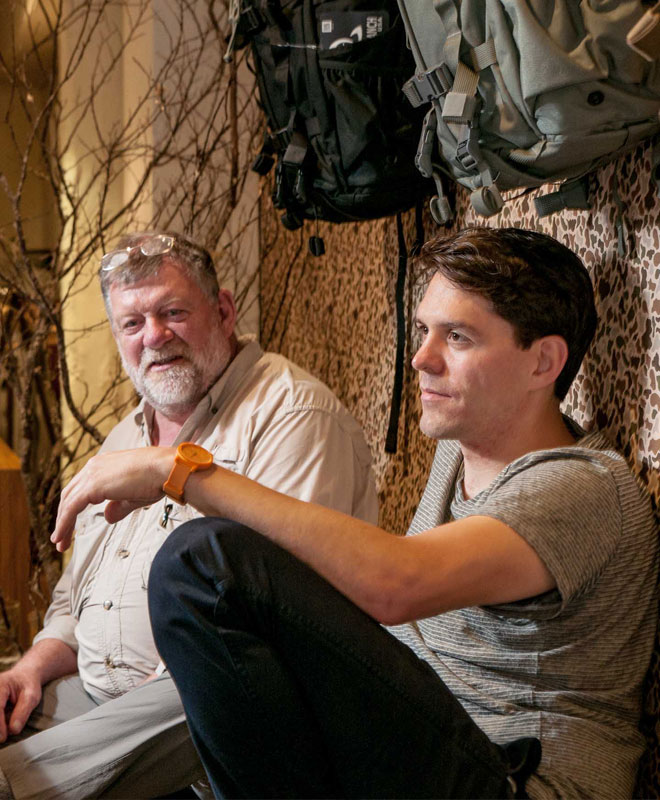
What does your design process look like from approaching a problem to creating the solution?
Well, first off, it’s good to have a problem. To simply have something like, “Oh, build it lighter,” gives you a very open-ended problem. Having a substantive problem that has some boundaries to it is actually much easier to deal with, even if it is a difficult problem like how do you wear a backpack over body armor without devolving into agony in two hours?
That’s why the hunting world has actually presented us with some solvable problems because they have to do things like be able to walk in the woods for a day. And if they have succeeded in bringing down an animal, then they’re dealing with dressing it out and trying to get as much meat out as possible before the brown bear or black bear comes along and eats the rest of their kill. It means they have to be able to move with a heavy load and move fast.
You have to fully appreciate the problem, which means you need to be working with people who deal with those problems in a very detailed manner. And the folks with the problems are the folks who give us the parameters for the solutions, even if it’s something that comes entirely out of our experience bearing load.
How do you test your gear?
We test the gear by getting out there and using the gear and thrashing it as hard as possible. We have some standardized trials that we use and, frankly speaking, getting past the boredom is sometimes the biggest problem. But it’s not just living and loving the product. The system we have been able to create here at the Ranch and being able to know that what we do matters for a fairly substantial group of people is keystone to the community we’ve built with the employees.
Frankly speaking, people have permission to have some fun. We’d better be able to have some fun doing this. It’s why we love our friends at MAP Brewery, which is about 200m from the Ranch. And the MAP, we like to say, stands for Mystery Ranch After Party. We can laugh about it. We can hoist a beer or three for it. And a lot of us get out to use the gear every chance possible.
We talk about family here, but it all comes back to we are doing the very best we can for some of the most demanding people out there. We get to talk with them. We get to visit with them when they’re here. And we get to see that what we are spending our time and effort on truly matters to several large groups of people. That is so addictive. We’re not just doing it for the money. We are doing it because people are able to get a lot out of having less pain in a day. That we can make a difference for people is enormous in how we live our lives.
Do you have any advice for someone looking to get into the industry, both in the design and business sides?
Work in a retail store for half a year. Work directly with the folk who are buying the gear. Get an appreciation for what at least one group of people who sell the gear have to go through. In addition to always looking at what you can do to improve the gear itself. I started out working in stores. And while I became a sales rep somewhat later, just before that I ended up wanting to mod some gear and talked myself into getting a real sewing machine. And once I had that, I modded my gear in a matter of days. Then I had to keep paying for the sewing machine so I started taking in repairs.
Doing repairs will teach you more than any kind of class because you get to see what actually goes wrong. You get to see why they designed it that way and what it takes to fix it. It also gave me a certain amount of attitude about whether or not being the cleverest designer out there added as much value as someone who could build stuff that would work properly every time and if something did break, building it so that the product would fail gracefully so you could still use it. You could still get out as opposed to simply counting on a guarantee and then dot, dot, dot. Well, okay, they’ll fix it, they’ll replace it. What if I don’t even want it anymore? If gear is going to fail, you should try and build it so it will fail gracefully. And to pretend that it never will just means you’re saying nothing can go wrong.
I would also advise you to never feel that you can’t get into the industry. I didn’t have a clear plan and had I had a clear plan, it would have been a wrong plan. And so being ready to accept that you’ve made mistakes and learned from your mistakes is an absolute key thing.
What are your thoughts on crowdfunded carry?
Crowdfunding is extremely interesting and there are people who’ll lock onto stuff. There are people who’ve done it successfully. But the majority of people put together maybe enough to produce a run of packs and then neglect a lot of costs that are recurring costs, rather than actually making a living. And in this world of crowdfunding, I would certainly start a business differently than I had. Whether or not I could start it successfully for the long term, that’s another interesting question. But crowdfunding is a real game-changer.
Now, as for “the last bag you’ll need”. Yeah, everybody can go, “Look, here it is. I’ve done the very best thing.” Basically, people’s needs shift and change and whether or not what you do is indeed the best thing in the world…? And I might add here, when you create something, especially when you haven’t really done it a lot before, it is extremely easy to fall in love with it. And you should! You created it. It’s your baby. However, your baby might have three eyes and pick its nose a lot.
Basically, whether or not you have created a classic or the last bag someone will need is up to someone else. It’s not up to you. If you say things like that you’re doing Marketing Speak 101, but you have to have some time and experience. And seeing a really cool-looking pack on a start-up page doesn’t mean it’s going to be built well, doesn’t mean it will actually work as well as you would hope. We’ve seen a lot of these things come and go. And right now, if I built the ultimate pack, the last pack you would ever need, I’d be full of Marketing Speak.
There are new ideas that can come along. The mix of gear you’re going to carry can change and shift. People used to carry single-lens reflex cameras and no phone and now you have no camera, but you have a phone. Getting down to carrying a minimal level of gear that still gives you the capabilities you need may not require a pack at all. A pack might be overkill. How we do this? It’s really a matter of taste and my taste is in my mouth.
“If gear is going to fail, you should try and build it so it will fail gracefully. And to pretend that it never will just means you’re saying nothing can go wrong.”
What are your thoughts on the future of carry?
Little anti-gravity balloons and you’ll just have your stuff in a simple bag tied to a string to this thing that you will trail along behind you, carrying zero load at all. Or not.
What was the main factor that made you want to go into the pack industry?
I had built tents and sleeping bags and some clothing and it just came down to I could make by far the biggest difference in the pain level that people had to deal with doing backpacks. And backpacks used a little different material suite than most other pieces of equipment and it just became what I like to do.
Thanks, guys, it’s been a pleasure.
Want to enjoy great Live Q&A sessions like the one above, geek out on all things carry with fellow enthusiasts, and swap, sell or buy awesome carry gear? Join Carryology Classified if you haven’t already and don’t miss out!





 Carry Awards
Carry Awards Insights
Insights Liking
Liking Projects
Projects Interviews
Interviews
